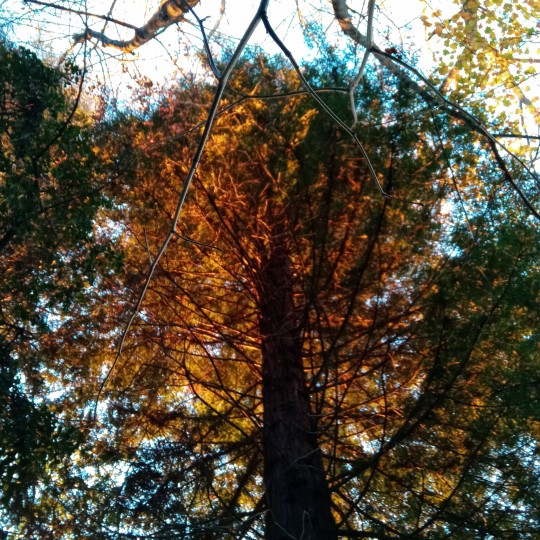#Pinophyta
Text
Phylum Semi-Finals

Big Spiky Things vs Little Soft Things
Pinophyta (conifers) fun fact: Giant sequoias, Sequoiadendron giganteum, can grow over 300 feet tall, 30 feet in diameter, and live for over 3,000 years. They are the world's largest trees.
Bryophyta (mosses) fun fact: Mosses in the Sphagnum genus can hold 16-26 times as much water as their dry weight.
#pinophyta#bryophyta#plant taxonomy showdown#battle of the plants#phylum round 3#phylum#plant bracket#tumblr bracket#bracket tournament#poll bracket#phylum semi-finals
150 notes
·
View notes
Text
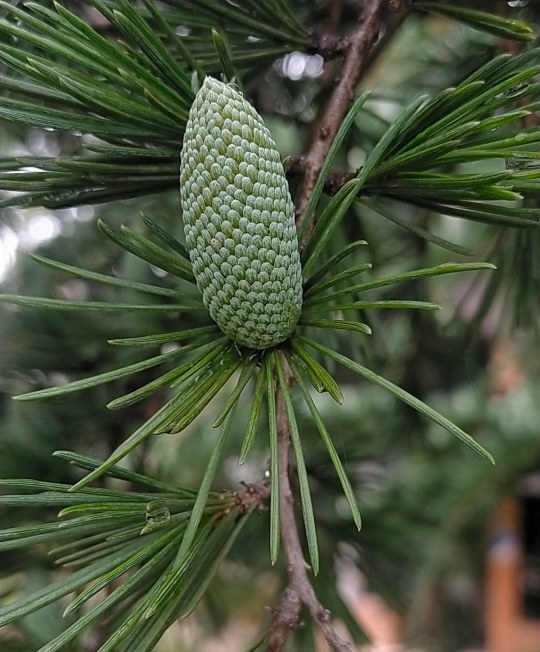
Cedrus sp.
27-MAR-2023
Melbourne, Vic
#australia#victoria#melbourne#pinecone#green#tree#cedar#gymnosperms#pinophyta#pinopsida#pinales#pinaceae#abietoideae#cedrus
0 notes
Text
@battle-of-the-taxons runs Organism Kingdom Tournament
Fungi win that tournament
Other people start a Plant Tournament and an Animal Tournament
▶ You are here ◀
Basidiomycota wins the Fungi tournament
Other people start an Ascomycota Tournament and a Zoopagomycota Tournament
Chordata wins the Animal Tournament
Other people start an Arthropod Tournament and a Mollusc Tournament
Magnoliophyta wins the plant tournament
Other people start a Bryophyta Tournament and a Pinophyta Tournament
Birds win the Chordate Tournament
Other people start a Mammal Tournament and a Fish Tournament…
This continues fractally like this forever*
*until we reach species/sub-species level
#I'm being facetious here#honestly I would totally follow all the hypothetical blogs mentioned above#misc#biology#predictions
58 notes
·
View notes
Text

Pine cone sketch | Limited edition fine art print from an original drawing.
A cone is an organ on plants in the division Pinophyta that contains the reproductive structures. The familiar woody cone is the female cone, which produces seeds.
My sketches start life as hand-drawn graphite images made on cartridge paper. I often work on these with charcoal, oil pastel or Caran d'Ache to create the look I'm after. The artwork is then scanned and finessed digitally ready for fine art printing. This process often referred to as Giclée printing uses the highest standard of printing methods to give gallery quality results that maintain all the details of the original sketch.
The graphite pencils I use are Faber-Castel, the oil pastels are Sennelier and the china-graph is Caran d’Ache. The inks are pigment based archive quality (100years+). The heavyweight specialist papers I use are of the best professional quality having a wonderful surface designed specifically for fine art drawings and illustrations.
Very limited editions with only ten per size printed.
All artwork is signed and includes a certificate of authenticity.
The A5 are 5.8" x 8.25" (14.8cm x 21cm)
The A4 are 8.25" x 11.7" (21cm x 29.8cm)
The A3 are 11.7" x 16.5" (29.8 cm x 42cm)
The A2 are 16.5" x 23.4" (42 cm x 59.4cm)
Originals are A3 11.7" x 16.5" (29.8 cm x 42cm)
Frames not included in price.
Free shipping on artwork to all destinations.
https://www.seanbriggs.co.uk/product/pine-cone/?feed_id=3044&_unique_id=65d6f899a722c
2 notes
·
View notes
Note
Ooh do you have any smutty batjokes fic recommendations to read while I recover?
I gotta admit, I've not read much lately! But here are some I've reread multiple times, which I don't think I've recc'd before... Hope you enjoy!
Mouthy by Pinophyta
(Joker wants Batman to do something naughty to his mouth, and will go to great lengths to get it.)
Give and Take by Fractualized
(A typical date for playboy Bruce Wayne goes awry when he has to turn on the charm for the Clown Prince of Crime, and it's much too easy to succumb to Joker's own charms.)
Bombshell by BouncyPickle
(Batman needs information from the Joker who is unwilling to provide it. He thinks of a new and unusual method to get what he wants out of the psycho. They both have more fun than Batman had expected.)
London (letting go) by Irisbleufic
(A metaphor within a virus within a metaphor. Even now [. . .], Bruce grudgingly had to admire the brilliant gall of it.)
13 notes
·
View notes
Text
Renaissance beauty ingredients and their uses:

Astragalus Antiseptic; emollient; soothing
Polygonum bistorta Anti-inflammatory; tonic; astringent
Bryonia Rheumatism; sciatica; anti-inflammatory
Cinnamonum camphora Anti-inflammatory
Pinophyta (Pinaceae) Patches and ointments
Cuminum cyminum Halitosis; stimulates circulation; disinfectant
Cyclamen europaeum Anti-inflammatory effect
Vicia faba Abscesses; erythema; skin rashes; inflammation of the skin; corns; warts
Ferula galbaniflua Tonic; stimulating; anti-infective; anti-inflammatory
Zingiber officinale Anti-spots; anti-dandruff; promotes hair growth
Acacia senegal Emulsifier
Boswellia Anti-inflammatory; antioxidant; antiaging; soothing; calming; elasticizer for red stretch marks
Arum italicum Expectorant; purgative; anti-inflammatory, antioxidant
Cyclamen hederifolium L. Purgative (toxic)
Juniperus Astringent; antiseptic; purifying for oily and impure skin and hair
Lilium Soothing; moisturizing; blemishes
Althaea officinalis Moisturizing; emollient; anti-inflammatory; anti-itching
Brassica oleracea Dry and brittle hair; anti-dandruff;
Allium cepa Anti-inflammatory, exfoliating; healing: antifungal; antibacterial
Rosaceae Sp. Anti-inflammatory; antioxidant
Rosa canina Antioxidant, anti-inflammator Astringent
Caesalpinia sappan Natural dye
Scilla
Urginea maritima Cardiotonic (toxic)
Prunus Amygdalus Dulcis Emollient; nourishing; antiaging; soothing; anti-stretch marks; hair care
Vitis vinifera Scalp psoriasis; hair care; face exfoliator
Viola Sp. Antiaging; anti-inflammatory; acne; eczema; herpes; psoriasis
Clematis viticella (Toxic)
Lupinus albus Wrinkle; antioxidant
Vitis vinifera Antioxidant; antiaging
Myristica fragrans Antiseptic; tonic; antioxidant; strong and shiny hair; oily skin
Eugenia caryophyllata Antiseptic; antioxidant
Pistacia lentiscus L. Oily skin; enlarged pores; acne
2 notes
·
View notes
Text
A conifer cone is a seed-bearing organ on gymnosperm plants. It is a type of fruit, usually woody, ovoid to globular, including scales and bracts arranged around a central axis, especially in conifers and cycads. The cone of Pinophyta (conifer clade) contains the reproductive structures. The woody cone is the female cone, which produces seeds. The male cone, which produces pollen, is usually herbaceous and much less conspicuous even at full maturity. The name "cone" derives from Greek konos (pinecone), which also gave name to the geometric cone


2 notes
·
View notes
Text
Genus metasequoia fossil

Genus metasequoia fossil software#
It is an excellent species for afforestation, and the planting of Metasequoia in quantity could play an important role in fuming the land green, increasing timber output and beautifying the environment. Its straight and full-boled stems indicate a fine qualify timber which can be used to make paper, as well as in construction and in making furniture and farm tools. This species of Metasequoia has strong adaptability and is quick-growing. To commemorate this discovery, the species was given the name "living fossil" in scientific circles. They identified the species by its fossil, one of the 10 fossils corresponding to the 10 tree species of the Metasequoia genus known to scientists up to now. glyptostroboides in Lichuan County, in Hubei Province. In the 1940s, two Chinese scientists, Hu Shian Sou and Cheng Wan Chun, discovered the M. Nobody knew that in a remote comer of China people had kept and propagated it. This old and rare tree species was thought, until recently to be extinct. There exists in the world a living fossil tree - the Metasequoia glyptostroboides (dawn redwood), native to China.143 - Forestry extension, making it work - China - Metasequoia: the national fossil treeĬhina - Metasequoia: the national fossil treeĬHINA'S "FOSSIL TREE" once thought extinct - now a bright future (CHAO CHIU JU)Ī METASEQUOIA SEEMING growth potential of more than 35 metres (JOHN KUSER) The timestamp is only as accurate as the clock in the camera, and it may be completely wrong.Unasylva - No. If the file has been modified from its original state, some details such as the timestamp may not fully reflect those of the original file.
Genus metasequoia fossil software#
This file contains additional information such as Exif metadata which may have been added by the digital camera, scanner, or software program used to create or digitize it. Locality: "Petrified Tree", northern Yellowstone National Park, nw Wyoming, USAįossil redwood tree trunk (probably Metasequoia) (Sepulcher Formation, Eocene "Petrified Tree", Yellowstone National Park, Wyoming, USA) 18 Stratigraphy: Sepulcher Formation, Washburn Group, lower Absaroka Volcanics Supergroup, Eocene Sometimes mineralization can completely obscure the biologic structure of fossil wood - some paleontologists refer to that as quartz replacement, but it's just extreme permineralization.Ĭlassification: Plantae, Pinophyta, Pinopsida, Pinales, Cupressaceae The original microscopic-level anatomy of wood can be preserved in a permineralized fossil. Permineralization involves the precipitation of minerals (usually quartz - SiO2) in the porosity of wood or bone by groundwater that has percolated through. "Perminerlization" is the proper term for what most people called "petrified wood". Redwoods do not live in Yellowstone today, so the climate has clearly changed since the Eocene. The tree itself is a redwood, probably belonging to the genus Metasequoia. This is a scarce example of a still-standing, Eocene-aged fossil tree in Yellowstone Park, Wyoming. Description Fossil redwood tree trunk (probably Metasequoia) (Sepulcher Formation, Eocene "Petrified Tree", Yellowstone National Park, Wyoming, USA) 18 (13460418925).jpgįossil redwood tree trunk in the Eocene of Wyoming, USA.

0 notes
Text

Yushan juniper
Juniperus morrisonicola
This individual juniper is found at Jiaming Lake National Trail in Taiwan, coming in at just around 1,000 years. It's one of the most famous trees in Taiwan. Juniperus morrisonicola is sometimes treated as a variety of Juniperus squamata, but DNA profiling suggests that it's its own species.
Juniper all over the world found in such extreme alpine tundra habitats exhibit this stunting and bending due to cold temperatures and exposure to wind.
Source: Bellamy the Ibex
#plants#pinophyta#pinales#cupressaceae#juniperus#juniperus morrisonicola#juniperus squamata#juniper#alpine
12 notes
·
View notes
Text
Phylum Round 1
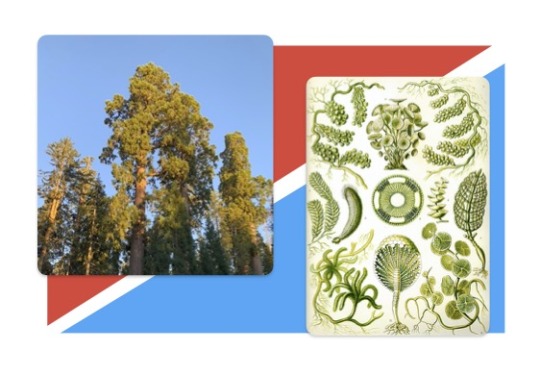
Pine Trees vs A Different Type of Green Algae!
Pinophyta or Coniferophyta (conifers): pines, firs, spruces, sequoias, cedars, junipers, larches, cypresses, kauri, yews — if it has cones and needles rather than leaves and fruit, it’s probably a conifer! (Other gymnosperms — plants that bear seeds but not fruit — are the cycads, the ginkgo-like plants, and the gnetophytes.) Most are trees, but some are shrubs; conifers are especially prominent in boreal forests near the Arctic Circle, which store 1/3 of Earth's terrestrial carbon.
Chlorophyta (big category of green algae less closely related to land plants): I wasn't sure I was going to have anything interesting to say about these guys, but I was so wrong! With over 4,000 known species, chlorophytes are extremely diverse. Most live in fresh water, but some live in the ocean or on land. Some live in extreme environments, like deep sea hydrothermal vents, hypersaline lakes, deserts, and the arctic. Some have mutualistic relationships with animals like mollusks or sponges or cnidarians, and others have mutualistic relationships with fungi, forming lichen. While plants are known for being autotrophs (creating their own food), some chlorophytes are heterotrophs -- they get their nutrition from other organisms, either as parasites or otherwise. Some are pathogens.
#Pinophyta#Chlorophyta#I am deeply regretting putting these two against each other in round one#plant taxonomy showdown#battle of the plants#phylum round 1#phylum#plant bracket#tumblr bracket#bracket tournament#poll bracket
159 notes
·
View notes
Photo

The longleaf pine was nearly wiped out 100 years ago. Can Southern landowners help it make a comeback? | Southerly
Longleaf pine forests once stretched from east Texas to the Florida panhandle, reached up through the sandhills of the Carolinas and into southern Virginia. The ubiquitous giant could live up to 500 years and grow up to 120 feet tall and two feet wide. Poets, scientists and historians marveled at the majesty of the tree: in 1791, naturalist William Bartram wrote in his book Travels Through North and South Carolina, Georgia of a “forest of the great long-leaved pine, the earth covered with grass, interspersed with an infinite variety of herbaceous plants, and embellished with extensive savannas, always green, sparkling with ponds of water.”
Across the Southeast, longleaf forests have been found to house over 1,200 endemic plant species and more than 300 rare or threatened animal species — including endangered species like the red-cockaded woodpecker and the gopher tortoise. Animals make their homes in the tree’s trunks and amongst its needles and burrow through its vast roots systems. “The longleaf system has so many homes, so many microhabitats,” Moore said. “That’s one of the reasons it supports such a diversity of species.”
Incredibly fire resistant, longleaf flourishes when wildfires tear through its forests. Fire burns away other tree species that threaten to choke it out, keeping ground cover low and the tree canopy high. Its lower branches drop when exposed to flame, making the trunk smooth and straight.
Its perfection proved its demise. Longleaf populations that had thrived for nearly 12,000 years under the care and management of Native Americans were demolished by white settlers in under two centuries, used to build ship masts, house frames, railroads and telephones poles. The trees became turpentine, kitchen furniture, hardwood flooring, railings, joists, roofs, and walls.
By the 1920s, mature populations of the tree had almost disappeared, and foresters turned to faster growing pine species to match the pace of the logging industry. The pine that helped build the American South lingered only in areas with government protection or places too difficult to access. One 2012 survey conducted by the U.S. Department of Agriculture estimated that under five percent of remaining longleaf pine forests in the U.S. are fully mature — roughly 12,000 acres. Several species, including the red-cockaded woodpecker, depend on old-growth longleaf to make their habitats.
#Longleaf Pine#Pinus palustris#Pinus#Pinaceae#Pinales#Pinopsida#Pinophyta#pine#trees#conifer#endangered#ecology#conservation
286 notes
·
View notes
Text
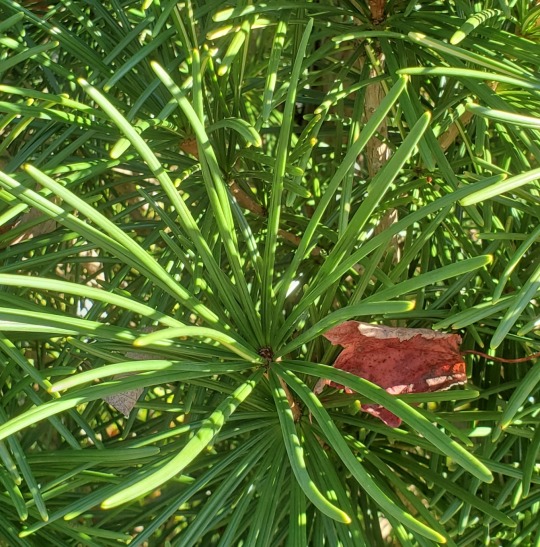
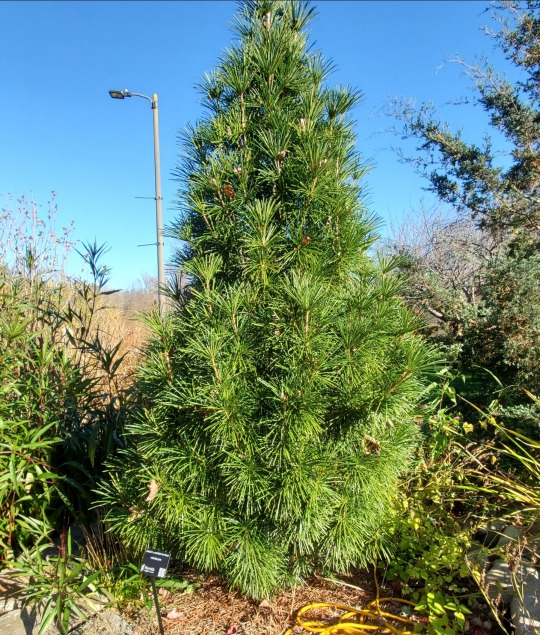
11/16/20
#japanese umbrella-pine#Sciadopitys verticillata#Sciadopitys verticillata 'Joe Kozey'#tree#conifer#plant#pinopsida#pinales#pinophyta#sciadopityaceae
2 notes
·
View notes
Photo
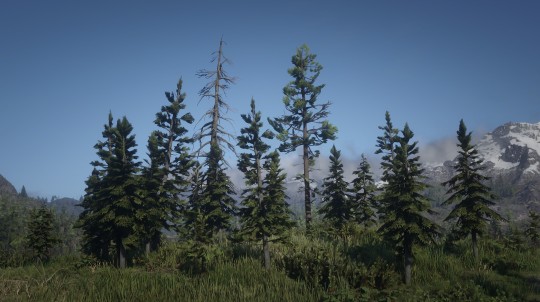
#Heartlands#New Hanover#Pinophyta#RDR2#Red Dead Redemption II#Rockstar Games#Rockstar Advanced Game Engine#Euphoria#Landscape#Landscape Photography#in game photography#in game photographer#Photography#sansabrisme
5 notes
·
View notes
Photo


Monkey Puzzle Tree
Araucaria araucana
Sources: Here
#monkey puzzle tree#araucaria#araucaria araucana#monkey tail tree#tree#plant#plantae#botany#nature#greenery#leaves#pinophyta#pinopsida#pinales#araucariaceae#araucarians#conifer#endangered#endangered species#endangered plant
36 notes
·
View notes
Photo

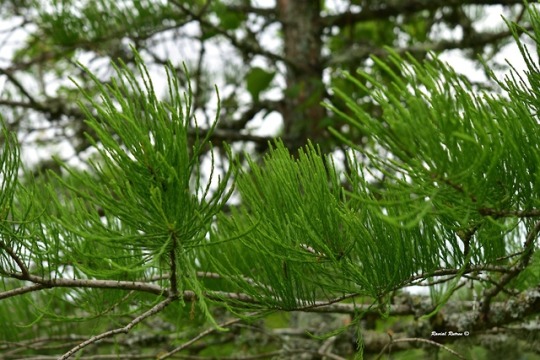

Pond cypress (Taxodium ascendens).
#pond cypress#Plantae#Pinophyta#Pinopsida#Pinales#Cupressaceae#Taxodium#Taxodium ascendens#cypress trees#Nikon D3400#nikonphotography#my flora#nature photography#photographers on tumblr#Black Bayou Lake National Wildlife Refuge#trees of the Southeastern United States#plants used in bonsai#trees of the United States#flora
2 notes
·
View notes
